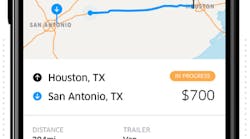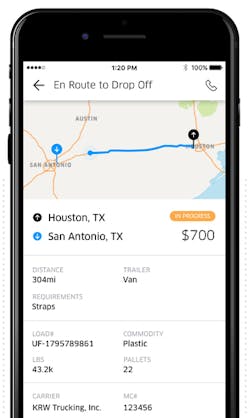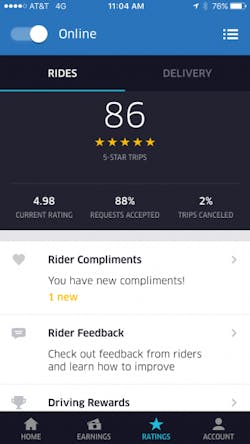The latest promotional video from Uber Freight makes the process of accepting a load and receiving payment as simple as a single tap. It likely won’t usually be quite that simple, as I learned from completing more than 500 trips driving for Uber and Uber Eats. Even after more than two billion trips worldwide, the process remains far from perfect.
That realization started with my first ride. The two men I picked up joked they would take it easy on me, but their smiles disappeared when they arrived at an unfamiliar building that was clearly not their destination. After a series of phone calls they gave me a new address, only a few blocks away from where I initially picked them up.
To be fair, most passengers were prompt and provided accurate information. The difficult trips, however, could quickly dent a day’s earnings.
An example was the pick-up request I received two blocks away from where I was parked. I made it to house quickly and waited in the driveway. After more than five minutes, the rider called to inform me he was at a different address, several miles away.
He apologized, but I don’t think he understood how much time was lost. He waited far longer for his pickup, and I faced extended unpaid driving time, while missing out on another potential nearby pick up.
Many riders waiting for a pickup sent text messages if they needed to contact me. That continued, even after Uber updated the app to make it easier to use the map to adjust a pickup location.
While this would not be an issue for a trucker able to immediately receive audible text messages, I was not able to access these texts while driving.
Inefficiencies tended to be amplified with the Uber Eats food delivery service.
Too often, restaurants requested a driver too early, leaving me waiting a long time because “I showed up too quickly.” Problems on the delivery end were more common, beyond the time no one was home or answered the telephone when I arrived with dinner.
Uber’s guidance dictated going to a front door, but was vague on delivering inside a high-rise building – something that would require paying out-of-pocket for a meter or risking a parking ticket.
Several times, the person was upset they had to come downstairs. It may have resulted in a bad review or loss of a tip.
In the business-to-business world of Uber Freight, many of these issues are not likely to be repeated. Information on its website offers details on detention time and other fees.
But it is inevitable that some incorrect information will be included, and other unexpected issues will arise.
Many of today’s truck drivers are too resistant to adopt new technologies, potentially at their own peril. For the brave ones ready to give Uber Freight a try, not expecting every trip to work as smoothly as the promo video may prepare you for a more realistic experience.





